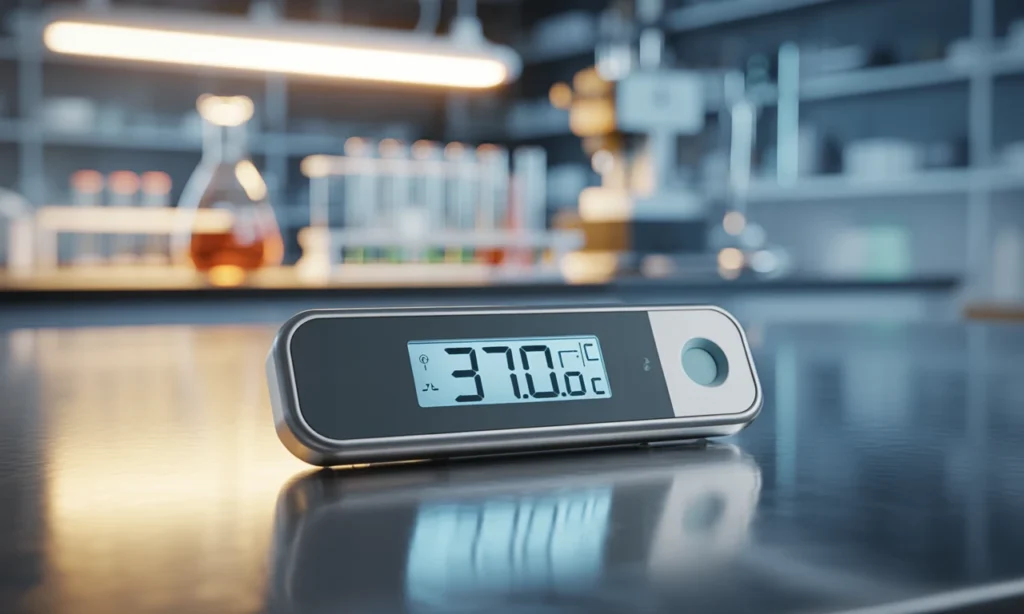Last Updated on October 13, 2025 by XAM CONTENT
New book for CBSE Class 6 Curiosity, Textbook of Science for Grade 6 learners has been published by NCERT as per National Education
Policy (NEP) 2020. Curiosity, Textbook of Science for Grade 6, comprises twelve chapters. Through the chapters, learners will embark on a journey that will connect them to the world around and spark curiosity for further exploration.
We are providing case study questions for class 6 science. Case study questions are the new question format that is introduced in CBSE board. The resources for case study questions are very less. So, to help students we have created chapterwise case study questions for class 6 science. In this article, you will find case study questions for cbse class 6 science chapter 7 Temperature and Its Measurement.
| Chapter | Temperature and Its Measurement |
| Textbook Name | Curiosity |
| Publication Date | July 2024 |
| Type of Questions | Case Study Questions |
| Nature of Questions | Competency Based Questions |
| Board | CBSE |
| Class | 6 |
| Subject | Science |
| Useful for | Class 6 Studying Students |
| Answers provided | Yes |
| Difficulty level | Mentioned |
| Important Link | Class 6 Science Chapterwise Case Study |
Case Study Questions on Temperature and Its Measurement
Questions
Passage 1:
Read the given passage below and answer the questions:
Temperature is a crucial aspect of both daily life and scientific experiments. The human body maintains a normal temperature of around 37.00C, though this can vary slightly from person to person and can be influenced by factors such as time of day and physical activity. Clinical thermometers, which are used to measure body temperature, usually have a scale from 350C-420C. They come in various forms, including mercury and digital types. Mercury thermometers are traditional and provide a visible reading on a glass scale, while digital thermometers use electronic sensors to display temperature. Laboratory thermometers, on the other hand, have a much broader temperature range, typically from -100C-1100C, and are used for measuring temperatures in scientific research and experiments. The choice of thermometer depends on the specific application: Clinical thermometers for medical use and laboratory thermometers for scientific measurements.

Q.1. Which of the following factors can influence a person’s body temperature?
(a) Time of day
(b) Physical activity
(c) Illness
(d) All of the above
Difficulty Level: Medium
Ans. Option (d) is correct.
Explanation: Various factors can influence body temperature, including time of day, physical activity and illness.
Q. 2. What is the primary difference between clinical and laboratory thermometers?
(a) Their temperature range
(b) Their shape
(c) Their colour
(d) Their accuracy
Difficulty Level: Medium
Ans. Option (a) is correct.
Explanation: Clinical thermometers have a narrower temperature range specifically designed for measuring human body temperature, while laboratory thermometers can measure a much wider range of temperatures.
Q. 3. Which type of thermometer uses a glass scale to display temperature?
(a) Clinical thermometer
(b) Laboratory thermometer
(c) Digital thermometer
(d) Both a and b
Difficulty Level: Medium
Ans. Option (d) is correct.
Explanation: Both clinical and laboratory thermometers can be made with glass scales. However, digital thermometers have become more common in recent years.
Q.4. What are the two main types of clinical thermometers?
Difficulty Level: Easy
Ans. Mercury and digital thermometers.
Also check:
- Beyond Earth Class 6 Case Study Questions Science Curiosity Chapter 12
- Nature’s Treasures Class 6 Case Study Questions Science Curiosity Chapter 11
- Living Creatures Class 6 Case Study Questions Science Curiosity Chapter 10
- Methods of Separation in Everyday Life Class 6 Case Study Questions Science Curiosity Chapter 9
- A Journey Through States of Water Class 6 Case Study Questions Science Curiosity Chapter 8
- Temperature and Its Measurement Class 6 Case Study Questions Science Curiosity Chapter 7
- Materials Around Us Class 6 Case Study Questions Science Curiosity Chapter 6
- Measurement of Length and Motion Class 6 Case Study Questions Science Curiosity Chapter 5
- Exploring Magnets Class 6 Case Study Questions Science Curiosity Chapter 4
- Mindful Eating Class 6 Case Study Questions Science Curiosity Chapter 3
- Diversity in the Living World Class 6 Case Study Questions Science Curiosity Chapter 2
- The Wonderful World of Science Class 6 Case Study Questions Science Curiosity Chapter 1
🚀 Boost Your Exam Prep: Get case study questions for all subjects (Class 6-12) now!
👉 Explore more resources on CBSE Class 6
You may also like
Learning Objectives
- Identification of the different types of thermometers and their specific uses in various applications.
- Comparing the temperature ranges of clinical and laboratory thermometers to determine their suitability for measuring body versus experimental temperatures.
- Interpretation of data from thermometers to understand the implications for body temperature monitoring and scientific experiments.
- Use of thermometer to determine the temperature of the day.
Our sense of touch can be inaccurate when determining temperature. For instance, water from a tap may feel cool, but water from an earthen pot may feel colder despite being at the same temperature.
Understanding materials helps us comprehend the physical world around us. All things are made up of some materials. The material from which an object is made affects its durability, functionality and aesthetic appeal. This understanding also influences the selection of materials for various uses.
Before thermometers were developed, fever was detected by touch and checking the pulse rate. People would feel the forehead or other parts of the body to check for warmth.
Keywords Related to Temperature and Its Measurement
- Thermometer: An instrument used to measure temperature, providing precise readings of how hot or cold an object or substance is.
- Digital Thermometer: A type of thermometer that uses electronic sensors to measure temperature and displays the result digitally.
- Fahrenheit: A temperature scale commonly used where the normal body temperature is 98.60F.
🔗👉 Read Also: NCERT Solutions for Class 1 to 12
Concept Checklist
| Concept | Understood (✓/✗) |
|---|---|
| Difference between hot and cold objects | |
| Why touch is not reliable for temperature | |
| Definition of temperature | |
| Types of thermometers and their uses | |
| Precautions while using clinical/lab thermometers | |
| Understanding thermometer scales: °C, °F, K | |
| Conversion between Celsius and Kelvin | |
| Why normal human body temperature may vary | |
| Activities to observe temperature changes | |
| Use of thermometer during illness and weather forecasts |

Frequently Asked Questions (FAQs) on Temperature and Its Measurement Case Study Questions
Q1: What is the new Science textbook “Curiosity” for Grade 6 about?
A1: he new textbook “Curiosity” for Grade 6 Science introduces students to the world of scientific exploration and discovery. It focuses on fostering curiosity and encouraging students to ask questions, observe the world around them, and engage in hands-on activities to understand scientific concepts.
Q2: How is the “Curiosity” textbook different from previous Science textbooks?
A2: “Curiosity” is designed to be more engaging and interactive than previous Science textbooks. It emphasizes inquiry-based learning, where students are encouraged to explore and discover through experiments, observations, and critical thinking rather than just memorizing facts. The textbook is structured around real-world phenomena and everyday experiences to make learning more relevant and exciting for students.
Q3: What are the key themes covered in the “Curiosity” textbook?
A3: The “Curiosity” textbook covers a wide range of themes, including the natural world, physical processes, and basic principles of life sciences. It explores topics such as the properties of materials, the functioning of living organisms, energy, forces, and environmental studies, all while emphasizing the importance of curiosity and inquiry in the learning process.
Q4: How does “Curiosity” support the development of scientific thinking in students?
A4: “Curiosity” supports the development of scientific thinking by encouraging students to ask questions, make observations, conduct experiments, and analyze their findings. The textbook includes activities and projects that help students apply the scientific method, fostering critical thinking, problem-solving, and a deeper understanding of scientific concepts.
Q5: How does “Curiosity” prepare students for higher grades in Science?
A5: “Curiosity” lays a strong foundation for higher grades by introducing students to key scientific concepts and developing their inquiry-based learning skills. By fostering curiosity, critical thinking, and problem-solving abilities, the textbook prepares students for more advanced scientific studies in the middle and high school levels.
Q6: Why does a thermometer placed in a cup of hot water eventually stop rising in temperature?
A6: When a thermometer is placed in a cup of hot water, it absorbs heat from the water until it reaches thermal equilibrium. At this point, the thermometer’s temperature is equal to the temperature of the water, and it stops rising.
Q7: What precautions should be taken when using a clinical thermometer?
A7: The thermometer should be cleaned with soap and water before and after use, and it should not be touched with fingers to avoid contamination. It should also be reset to ensure accuracy.
Q8: If the temperature of an object increases by 10°C, by how many degrees Fahrenheit does it increase?
A8: An increase of 10°C is equivalent to an increase of 18°F.
Q9: Do old people, even when healthy, generally have lower body temperatures than young adults?
A9: Yes, older adults often have lower body temperatures compared to younger adults, even when they are healthy. The average body temperature for healthy older adults is generally around 36.1°C – 36.8°C (97.0°F – 98.2°F). Reasons for lower body temperatures in older adults is decreased metabolic rate, reduced muscle mass, less efficient thermoregulation, impaired circulation and less subcutaneous fat.
Q10: Are there any online resources or tools available for practicing class 6 science “Temperature and Its Measurement” case study questions?
A10: We provide case study questions for CBSE Class 6 Science on our website. Students can visit the website and practice sufficient case study questions and prepare for their exams. If you need more case study questions, then you can visit Physics Gurukul website. they are having a large collection of case study questions for all classes.
Q11. What are the important keywords from the chapter “Temperature and Its Measurement”?
A11: Important keywords from the chapter “Temperature and Its Measurement” is given below-
Temperature: Measure of hotness or coldness of a body
Thermometer: Device used to measure temperature
Celsius: Temperature scale used widely in science and India
Fahrenheit: Temperature scale used in the USA
Kelvin: SI unit of temperature, used in scientific work
Clinical Thermometer: Measures body temperature
Laboratory Thermometer: Measures temperature of liquids and substances in labs
Digital Thermometer: Battery-operated thermometer with digital display
Infrared Thermometer: Measures temperature from a distance
Room Thermometer: Used to measure air temperature in a room
Degree: Unit used for measuring temperature (except Kelvin)



